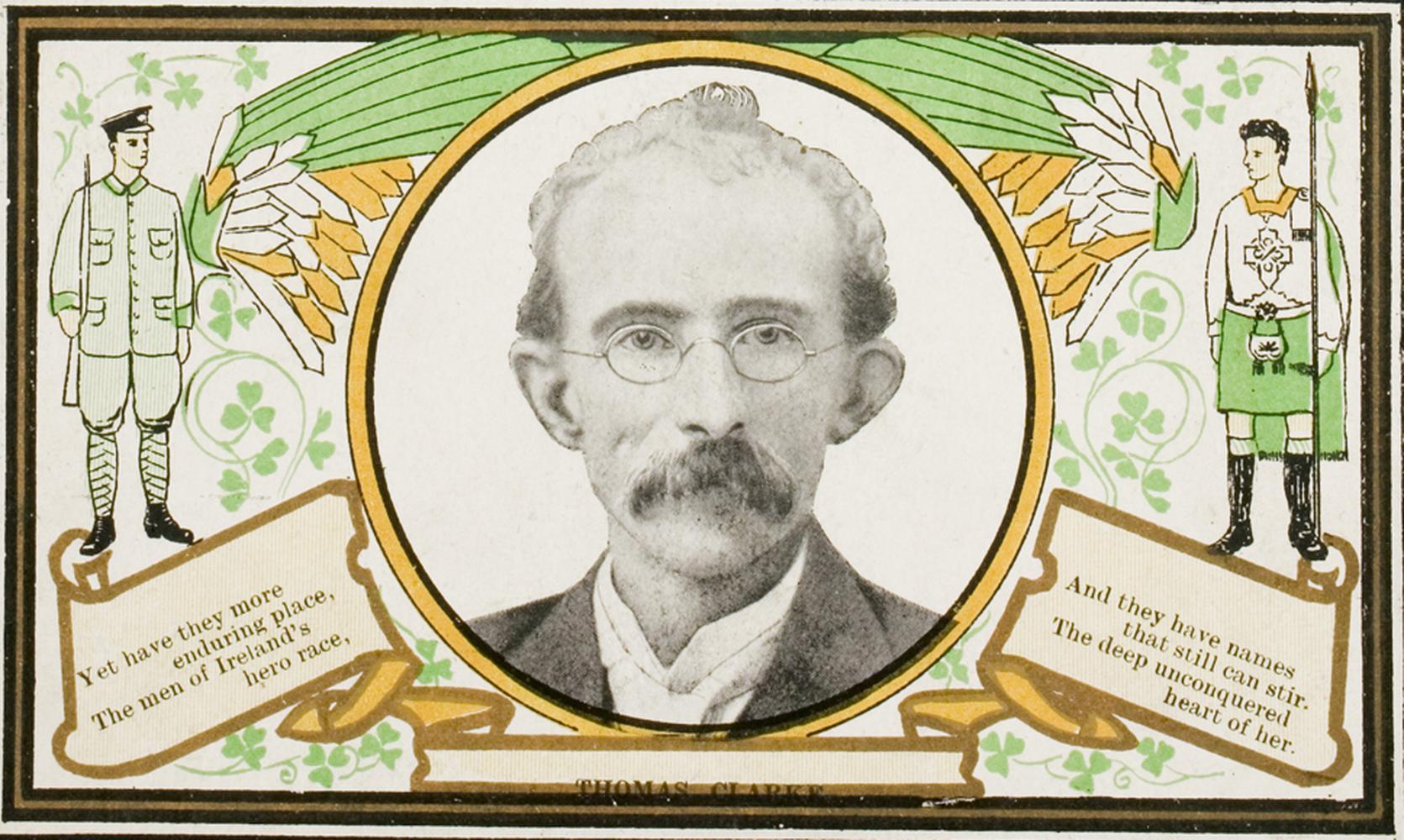
Thomas James Clarke (1858–1916)
Revolutionary
Extract from RIA Dictonary of Irish Biography by James Quinn
With IRB militants Denis McCullough (qv), Bulmer Hobson (qv), and Mac Diarmada, he published the republican journal Irish Freedom from 15 November 1910 and kept it going until its suppression in December 1914. Although sharply critical of the Irish parliamentary party and its pursuit of home rule, Clarke was overjoyed at the way in which the home rule crisis polarised Irish politics: colleagues remembered him rubbing his hands with glee whenever he spoke of the UVF. Always on the lookout for dedicated activists, he invited Patrick Pearse (qv) to give the oration at the Wolfe Tone commemoration at Bodenstown in June 1913 and facilitated his entry into the IRB in November 1913, overriding the reservations of those who suspected Pearse of personal ambition and political unreliability. Operating behind the scenes, Clarke helped found the Irish Volunteers in November 1913, and strongly opposed accepting the nominees of John Redmond (qv) on to the Volunteer executive in June 1914 – an issue on which he broke bitterly with Hobson, accusing him of being a Castle spy. Clarke and Mac Diarmada were the main figures behind the coup of 24 September 1914, when anti-Redmondites seized the Volunteer headquarters at 41 Dawson St., and issued a manifesto repudiating Redmond's leadership. They were delighted with the ensuing split, which increased their control over a militant rump of Volunteers....
On 9 September 1914 Clarke presided at a conference of separatists, mostly IRB men, which decided in principle to use the opportunity of European war to mount an insurrection. Clarke, as treasurer, and Mac Diarmada, as secretary, were the key figures on the IRB supreme council – McCullough's presidency was essentially nominal. They were fervent advocates of revolutionary action and increasingly bypassed the supreme council. To prepare for insurrection they established in May 1915 a military committee (later council) which became the real power in the IRB and which they themselves joined in September 1915....
... He served in the GPO during Easter week (24–9 April), and although he held no official position or military rank he presided at military council meetings and, after James Connolly (qv) was badly wounded (27 April), played a major part in directing military operations. After fleeing the blazing GPO to a makeshift headquarters at 16 Moore St., Clarke was the only leader who insisted on fighting on to the end, but was overruled, and he broke down sobbing when Pearse decided to surrender. Many Volunteers were incensed by Clarke's treatment on the Rotunda hospital steps after the surrender, when he was verbally abused and roughly stripped by a British army officer, Capt. P. S. Lea-Wilson (who, as an RIC officer, was shot dead in Gorey in 1920). ... Court-martialled in Richmond barracks (2 May), Clarke made no attempt to defend himself and was sentenced to death. Allowed to see his wife, he told her that ‘between this and freedom Ireland will go through hell, but she will never lie down again until she has attained full freedom’ (Kathleen Clarke, 95); he also told her he was glad he would be shot, his greatest dread being that he would be imprisoned again. He was shot in the first round of executions at Kilmainham jail (3 May 1916), and buried at Arbour Hill prison cemetery.
